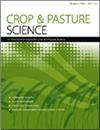Assessment of genetic diversity and DNA fingerprinting of rare species of the genus Crambe (Brassicaceae)
IF 1.9
4区 农林科学
Q2 AGRICULTURE, MULTIDISCIPLINARY
引用次数: 1
Abstract
ABSTRACT Context. Preservation of genetic diversity of species is a pressing issue; in particular, the preservation of the gene pool of many rare and endangered plants is a priority. Species of the genus Crambe (family Brassicaceae) have potential in agriculture and bioremediation. Aims. This study aims to assess the genetic diversity and DNA fingerprint of five rare species of the genus Crambe, and to develop the concept of a genetic passport for rare plants. Methods. DNA fingerprinting was conducted via the inter simple sequence repeat (ISSR) method, using six ISSR primers. Hierarchical cluster analysis of the species was performed. Key results. In total, 145 polymorphic loci were detected. The studied species formed two different clusters on genetic dendrogram analysis. The first cluster comprised two species, Crambe steveniana and C. tataria from a single subsection (Tatariae), forming a common clade. They were the most genetically close species with genetic similarity of 0.8431. The remaining three species (C. cordifolia, C. maritima, C. pinnatifida), from another subsection of Crambe, formed nodes from the general clade. Conclusions. The findings allow plants to be genetically certified using our methods and informative ISSR primers for rare plants. We were able to propose a genetic formula identifying a species and present an example of a genetic passport for rare plants. The genetic structure of C. pinnatifida was investigated for the first time. Implications. The present findings contribute to the systematics and critical investigation of rare plant species with genetic resource potential. A genetic passport could be used in the protection of copyright of agricultural varieties.十字花属稀有物种的遗传多样性评价及DNA指纹图谱
抽象的上下文。保护物种遗传多样性是一个紧迫的问题;特别是对许多珍稀濒危植物基因库的保护是当务之急。芸苔科芸苔属植物在农业和生物修复方面具有潜在的应用价值。目标本研究旨在评估5种稀有植物的遗传多样性和DNA指纹图谱,并提出稀有植物遗传护照的概念。方法。采用简单序列重复法(ISSR)进行DNA指纹鉴定,使用6条ISSR引物。对物种进行了层次聚类分析。关键的结果。共检测到145个多态性位点。研究种在遗传树状图分析上形成两个不同的聚类。第一个聚类包括两个种,Crambe steveniana和C. tataria来自一个分支(Tatariae),形成一个共同的分支。遗传相似性为0.8431,是遗传最接近的种。其余3种(C. cordifolia, C. maritima, C. pinnatifida)来自克兰贝的另一个分支,在总枝上形成节。结论。这些发现允许植物使用我们的方法和丰富的稀有植物ISSR引物进行基因认证。我们能够提出一个识别一个物种的遗传公式,并提出一个稀有植物遗传护照的例子。本文首次对裙带菜的遗传结构进行了研究。的影响。这些发现有助于对具有遗传资源潜力的稀有植物物种进行系统分类和批判性研究。遗传护照可用于农业品种的版权保护。
本文章由计算机程序翻译,如有差异,请以英文原文为准。
求助全文
约1分钟内获得全文
求助全文
来源期刊

Crop & Pasture Science
AGRICULTURE, MULTIDISCIPLINARY-
CiteScore
4.20
自引率
15.80%
发文量
111
审稿时长
3 months
期刊介绍:
Crop and Pasture Science (formerly known as Australian Journal of Agricultural Research) is an international journal publishing outcomes of strategic research in crop and pasture sciences and the sustainability of farming systems. The primary focus is broad-scale cereals, grain legumes, oilseeds and pastures. Articles are encouraged that advance understanding in plant-based agricultural systems through the use of well-defined and original aims designed to test a hypothesis, innovative and rigorous experimental design, and strong interpretation. The journal embraces experimental approaches from molecular level to whole systems, and the research must present novel findings and progress the science of agriculture.
Crop and Pasture Science is read by agricultural scientists and plant biologists, industry, administrators, policy-makers, and others with an interest in the challenges and opportunities facing world agricultural production.
Crop and Pasture Science is published with the endorsement of the Commonwealth Scientific and Industrial Research Organisation (CSIRO) and the Australian Academy of Science.
 求助内容:
求助内容: 应助结果提醒方式:
应助结果提醒方式:


